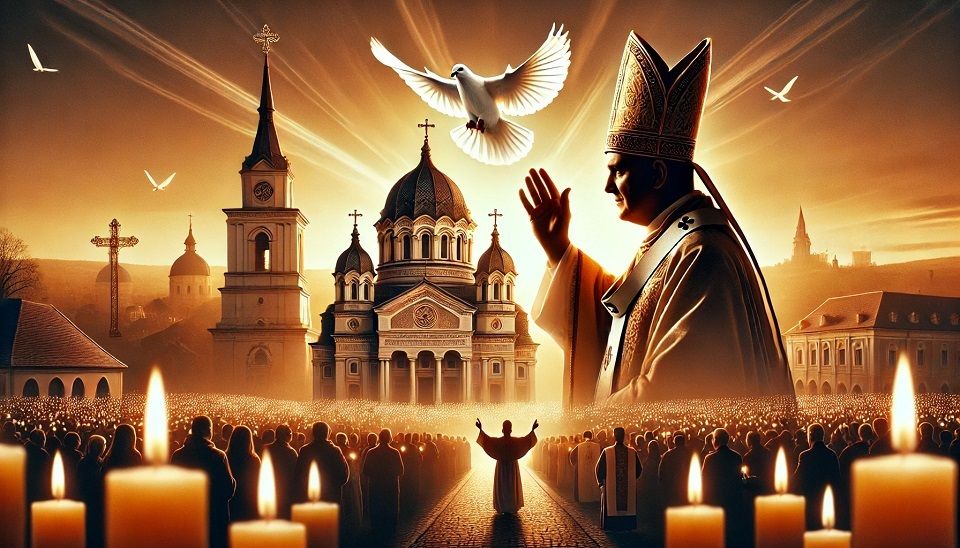Romanian fighter pilot Gheorghe Mociorniță
Gheorghe Mociornita was an ace of Romania's Royal Air Force back in WWII

Steliu Lambru, 14.02.2021, 14:00
When it comes to building and testing various flying machines, Romania
boasts a tradition of more than 100 years. In early 20th century,
some Romanians showed a keen interest in aviation and got involved in this emerging
domain purely out of passion. States also got increasingly involved with the
new domain, which became of economic, military and strategic importance. Some
of the pioneering aviators became leading figures in this new life domain while
others became part of the community of enthusiasts, who pushed this new domain into
gaining momentum.
However, inventors were not the only ones to have made a name for
themselves in aviation. They shot to fame thanks to the performances they achieved,
the time in history when their talents and inspiration manifested themselves and
even to destiny. A major name of the Romanian military aviation was WWII hero,
lieutenant Gheorghe Mociornita who had been killed in action at the age of only
26 in the Czech Republic, on April 21st 1945, nine days before the
war was over.
Gheorghe Mociorniță came
from a famous family in inter-war Romania. His father was a petroleum
technician while his uncle was the well-known industrialist Dumitru Mociornita,
a major entrepreneur in the country’s then leather and footwear industry.
Strangely enough for a future fighter pilot, Mociornita had graduated from the
Faculty of Letters and Philosophy with the Bucharest University. He got his
flight permit and in 1943, when war was raging in Europe, after graduating from
the military academy he became a fighter pilot.
The Mociornita family was dealt a heavy blow back in 1941 when his elder
brother was killed in the fights of Sevastopol in Crimea. In 1993, pilot Tudor
Greceanu, a colleague of Mociornita’s, recollected the time he was flying the
Messerschmitt fighters back in 1941 when the Romanian army conquered
Odessa.
Tudor
Greceanu: A fighter squadron usually consisted of 15 planes at that time. Not
all of them were operational but we counted on at least 12 flightworthy planes
almost on a daily basis. The rest were undergoing various maintenance works or
repairs. However, at a certain time after the fall of Odessa, out of all the 45
planes of our three squadrons, we ended up only with 3. Because they were
unable to replace them in due time back then. The Romanian state had initially
purchased from Germany 3 squadrons of Messerschmitt fighters bf 109. We received
the planes, got them ready and went straight to war. What was hit, damaged or
in need of repair of course became unavailable.
After getting his pilot license, Mociornita joined the 1st
Fighting Squadron to do his training. In the spring of 1944 after the first
allied bombs had fallen in the oil area of the Prahova Valley, Mociornita’s squadron
was sent to intercept the US bombers. In the month of May, he scored his first
victory against the enemy when he brought down two US bombers, which took off
from the air base in Foggia, Italy. Until August the 23rd 1944, when
Romania left the Axis, second lieutenant Mociornita had taken part in all the
missions carried by his group.
After August 23rd
1944, Mociornita became lieutenant and was awarded the Romanian Crown medal for
valor in the fight against the enemy and for the support given to the ground
troops.
The frontline moved to the West now and the young fighter pilot joined
the efforts to liberate northern Transylvania from under Hungarian occupation
and also in the liberation of Czechoslovakia. He was assigned various missions ranging
from reconnaissance to air support for the ground troops. Taking off from air
bases in Hungary, the 2nd Fighting Group, Mociornita was part of, provided
air support to the advancing 27th Soviet army. In his last mission,
the 29th, Mociornita was patrolling an area used by the retreating
German troops. He was flying a Romanian-made fighter plane IAR 80 and with his
wing-man started strafing the German columns. Because he had to fly at a lower
altitude he was shot down by the anti-aircraft guns. His body was buried in the
cemetery of Romanian heroes in Zvolen, Slovakia.
During his 29 missions, the Romanian pilot Gheorghe Mociornita managed
to shoot down three planes and is considered an ace. He was posthumously
awarded the Romanian Star, the Romanian Crown and the Air Force Virtue while
parts of his fighter plane were placed on display at the National Military
Museum in Bucharest. A statue was erected to his memory in his native town in
2015 and Romania’s 86 Fighting Group is bearing his name.
(bill)





























